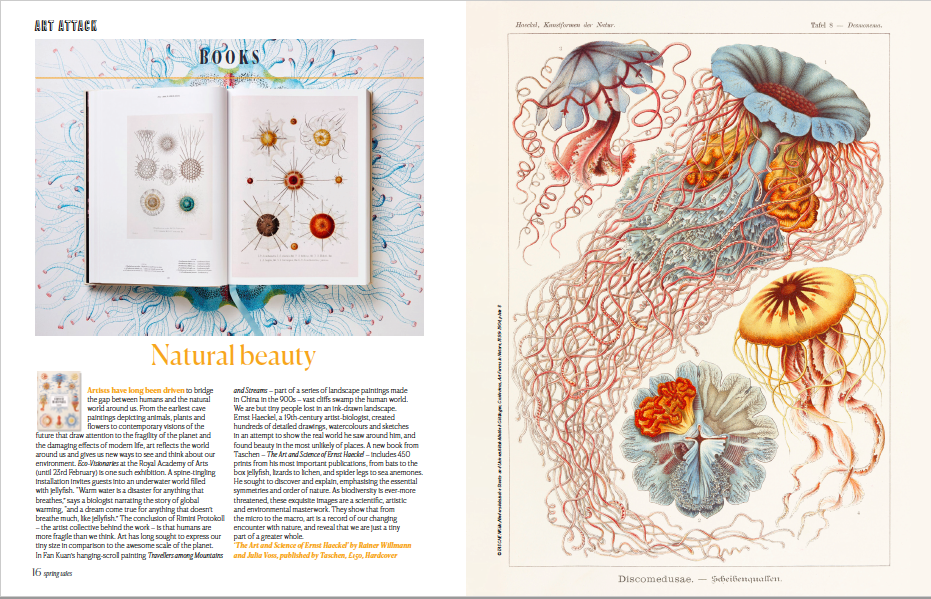Natural beauty
Artists have long been driven to bridge the gap between humans and the natural world around us. From the earliest cave paintings depicting animals, plants and flowers to contemporary visions of the future that draw attention to the fragility of the planet and the damaging effects of modern life, art reflects the world around us and gives us new ways to see and think about our environment. Eco-Visionaries at the Royal Academy of Arts (until 23rd February) is one such exhibition. A spine-tingling installation invites guests into an underwater world filled with jellyfish. “Warm water is a disaster for anything that breathes,” says a biologist narrating the story of global warming, “and a dream come true for anything that doesn’t breathe much, like jellyfish.” The conclusion of Rimini Protokoll – the artist collective behind the work – is that humans are more fragile than we think. Art has long sought to express our tiny size in comparison to the awesome scale of the planet.
In Fan Kuan’s hanging-scroll painting Travellers among Mountains and Streams – part of a series of landscape paintings made in China in the 900s – vast cliffs swamp the human world. We are but tiny people lost in an ink-drawn landscape. Ernst Haeckel, a 19th-century artist-biologist, created hundreds of detailed drawings, watercolours and sketches in an attempt to show the real world he saw around him, and found beauty in the most unlikely of places. A new book from Taschen – The Art and Science of Ernst Haeckel – includes 450 prints from his most important publications, from bats to the box jellyfish, lizards to lichen, and spider legs to sea anemones. He sought to discover and explain, emphasising the essential symmetries and order of nature. As biodiversity is ever-more threatened, these exquisite images are a scientific, artistic and environmental masterwork. They show that from the micro to the macro, art is a record of our changing encounter with nature, and reveal that we are just a tiny part of a greater whole.
‘The Art and Science of Ernst Haeckel’ by Rainer Willmann and Julia Voss, published by Taschen, £150, Hardcover

